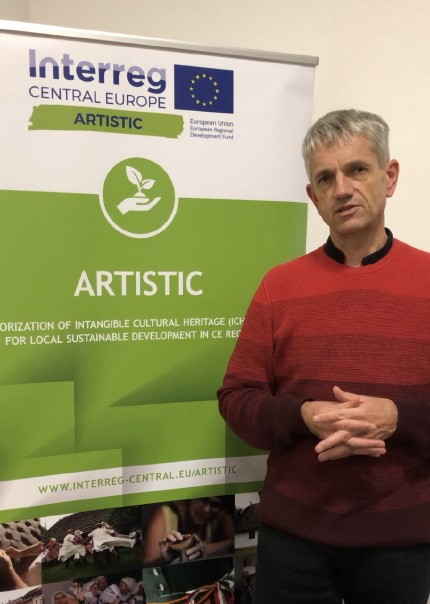Interview with Reinhard Willfort - Managing Director at ISN – innovation service network GmbH

PHOTO: ARTISTIC PROJECT PHOTO ARCHIVE
- What is the most important aspect to create successful crowdfunding campaign for the projects dedicated to the Intangible Cultural Heritage?
- For this kind of projects, at the beginning we have to think who is our crowd – i.e. the society that is and will be gathered around our cultural project. Is this group locally located, also national or possibly an international one? What are their needs and expectations, what are benefits of supporting the project? The key aspect is to define precisely the expected results of our crowdfunding campaign. These steps are important to take a decision about the right mode of crowdfunding to be used, is it a donation based type, a reward or equity.
It is worth thinking about emotional aspects of the campaign, adapt it to the needs of our target group. The best option is to start locally with our project, to be in touch with people who know about our initiative, its background and originators, to get in touch with the most important persons who can support us at the early stage of campaign implementation. We must know the story we want to tell people and be emotionally connected with our project’s closest crowd. Then with time we can work on increasing of the group of people and entities that can support our initiative.
- What are the main challenges to use crowdfunding for cultural projects?
- The first challenge is communication. It is very important to have a strong communication team and materials to support this kind of campaign. At the beginning, the challenge is to come up with a good emotional story, to engage the people who are part of our project and decide in common what we want to tell the crowd and how we can efficiently communicate it.
It is worth taking into consideration not to be so digital at the beginning of our communication activities, to start from individual contact with our target group, invite people for local events, bring them together, share emotions referring to our projects, connect them emotionally with our initiative. Then, as a next step, we can start to work digitally.
STORY -> STRONG MESSAGE –> CREATE MEDIA -> INVITE IN THE CIRCLE THE CROWD -> PLAN THE COMMUNICATION ACTIVITIES FOR THE 2 OR 3 NEXT MONTHS.
The idea of crowdfunding in combining the marketing and funding activities. Bringing these two areas together is a challenge, therefore it is very important to think what the efforts of both sides, project originators and the crowd are, and decide what we can give back or offer the crowd for their money and support. If we successfully manage with this, we gain a lot for our project implementation – money and visibility. This is a perfect opportunity for such Intangible Cultural Heritage projects.
- What are the next steps after implementing the crowdfunding campaign? What should local actors - project originators pay attention to?
- We look at the crowdfunding not only in the aspect of one certain campaign area. Initial questions which every project originator should think about is, what do I want/plan to achieve after this first campaign. On the one hand it can be the money, on the other one the people who are willing to join the circle of the crowd and give their trust to the initiative and its originators. This is why it is worth thinking before the first crowdfunding campaign starts about roles of our activities, business models and long term goals of our actions. It is worth doing this frequently, not only once, to increase the crowd which will help us develop and grow. Therefore, the goal of crowdfunding is not only to collect the money, but also to create, gather around your initiative the crowd that will stay with originators also after the implementation of the project. This emotional aspect of the project and campaign is an opportunity to keep people together with project originator after campaign ends, and this is also what we see as a future of crowdfunding.
